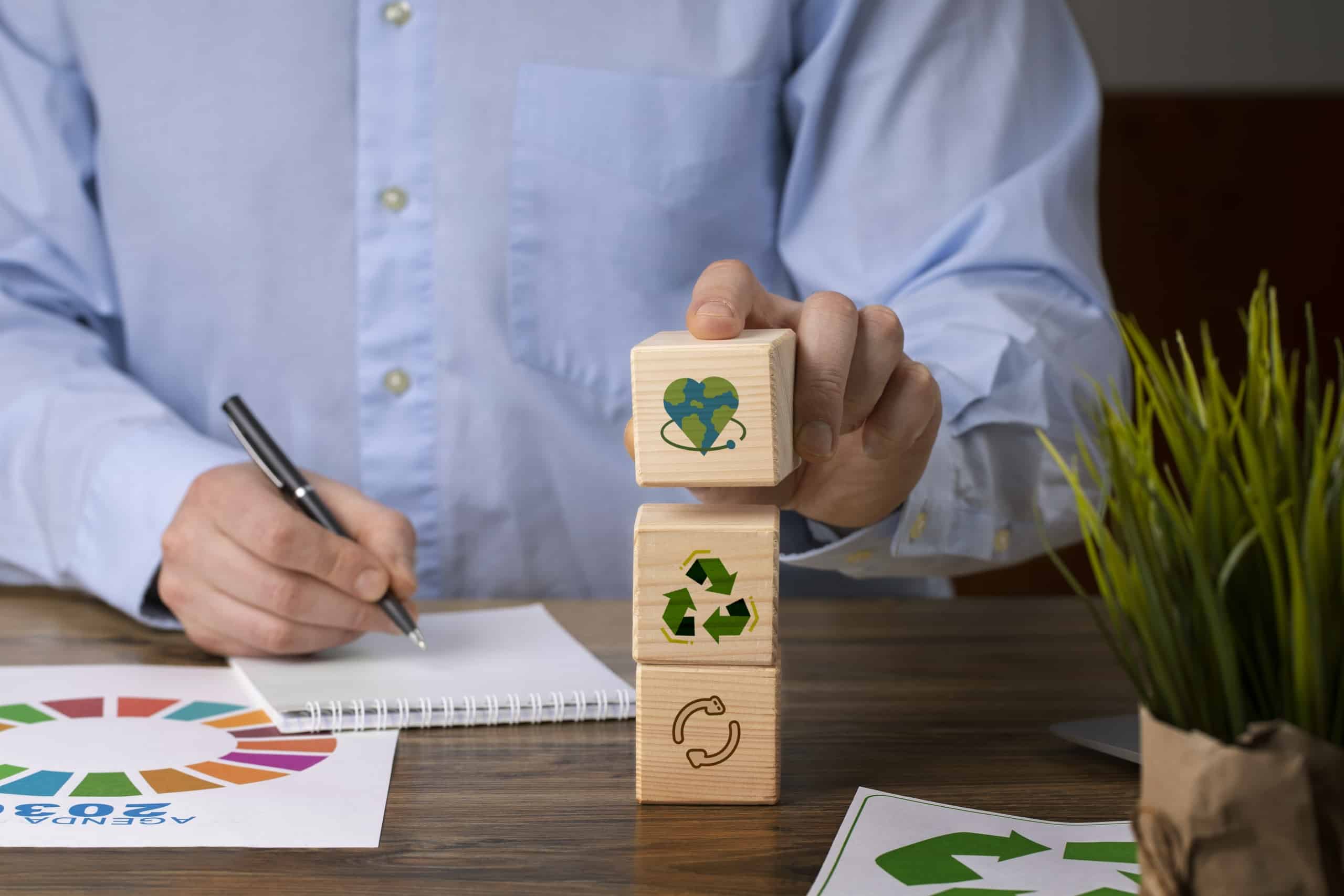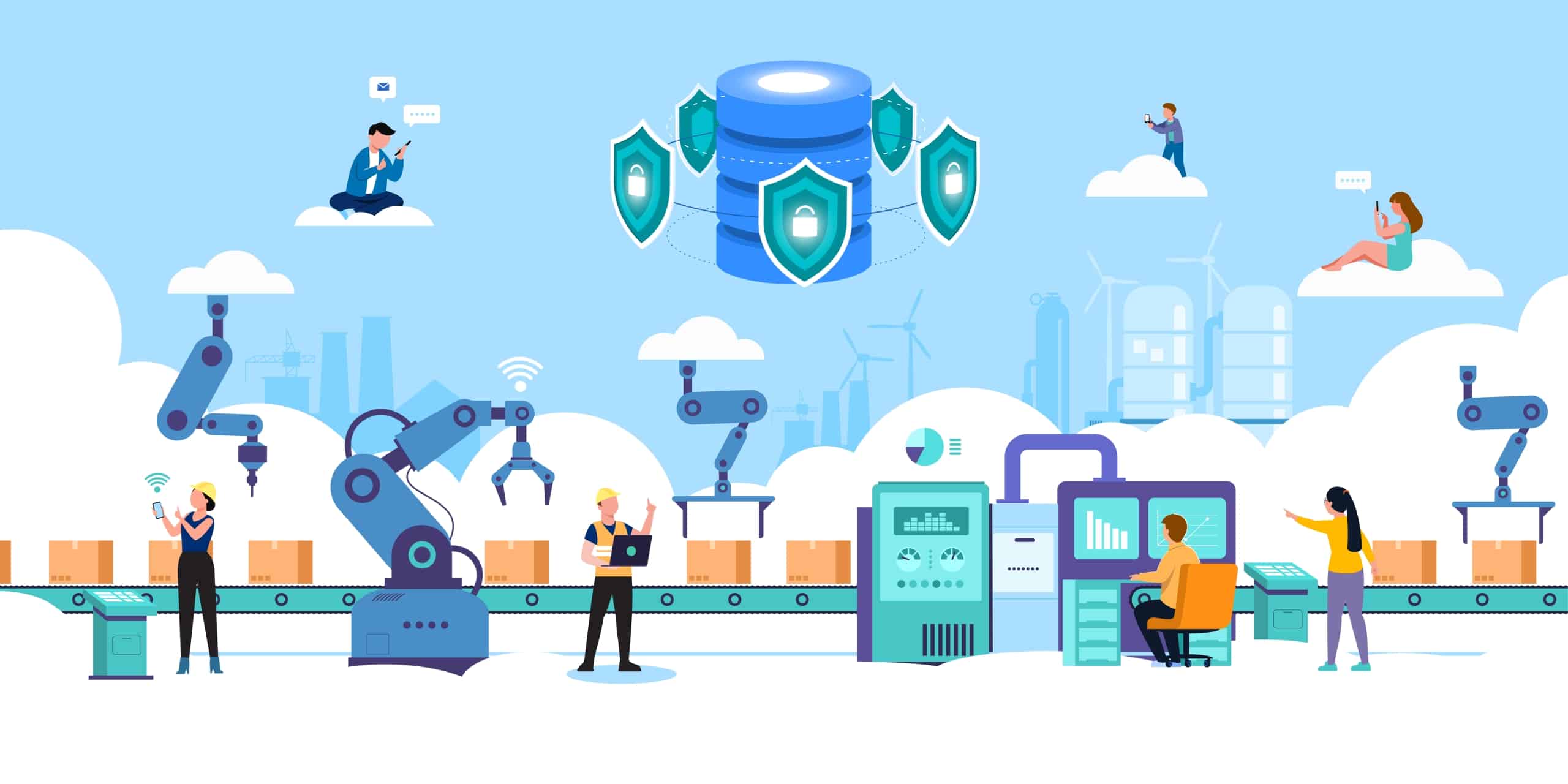Embrace Eco-Friendly Packaging Materials
Adopting environmentally-friendly packaging materials is an essential measure for wet wipes makers seeking to minimize their ecological footprint. Conventional plastic packaging, although practical and long-lasting, has substantial environmental issues since it does not naturally break down. Wet wipes manufacturers may greatly reduce waste and pollution by using biodegradable and compostable materials. These environmentally friendly materials, often obtained from sustainable sources such as biodegradable plastics made from plants, recycled paper, and polymers generated from starch, decompose more readily and securely in the natural surroundings. This not only aids in diminishing the total carbon footprint of the manufacturing process but also connects the organization with the growing customer demand for sustainable goods.
Adopting environmentally friendly packaging materials requires more than just changing the kind of materials used; it demands a holistic strategy to revamp packaging procedures. Plant-based plastics and biodegradable polymers may need distinct handling and storage conditions in contrast to conventional plastics. Manufacturers are required to allocate resources towards research and development to guarantee that these novel materials adhere to the equivalent performance benchmarks as conventional ones. This involves guaranteeing that the container is sturdy, impermeable to moisture, and able to maintain the quality of the wet wipes contained therein. Wet wipes manufacturers may ensure the provision of a high-quality product while remaining dedicated to sustainability objectives by conducting comprehensive testing and validation of eco-friendly materials.
Furthermore, the use of environmentally sustainable packaging materials might also result in long-term cost reductions. Although the initial expenditure on new materials and techniques may be greater, the advantages often surpass the expenses. By using recycled paper and other biodegradable materials, one may effectively save expenses related to trash disposal and mitigate the risk of incurring environmental penalties. Moreover, these materials often have a lower weight compared to conventional plastics, resulting in reduced shipping expenses. Consumers are becoming more inclined to spend an additional cost for items that have environmentally friendly packaging, which might potentially increase sales and foster brand loyalty. By using environmentally-friendly packaging materials, makers of wet wipes not only contribute to the well-being of the world but also establish themselves as frontrunners in a market that prioritizes sustainability.
Optimize Packaging Design
Efficiently designing packaging is a crucial tactic for minimizing waste in the manufacturing of wet wipes. The objective is to design packaging that utilizes a reduced amount of materials while maintaining both usefulness and durability. An efficient strategy involves minimizing the dimensions and mass of the packaging. Reducing the size and weight of packaging results in a decreased need for raw materials, leading to a direct reduction in waste and manufacturing costs. Furthermore, it decreases the total carbon footprint by reducing the energy requirements for transportation. Through careful and precise package design, wet wipes manufacturers may remove any unneeded surplus, resulting in a more sustainable and cost-effective solution.
Pouches and other forms of flexible packaging provide notable benefits compared to conventional rigid containers. Flexible pouches use much less material and may be specifically constructed to properly safeguard wet wipes from contamination and drying. Additionally, they are more compact, both in terms of storage and transportation, resulting in significant cost reductions. Additionally, flexible packaging often exhibits a reduced ecological footprint throughout its manufacturing and disposal processes. The adaptability of these designs enables the incorporation of inventive elements like reclosable fastenings, which improve the durability of the product and provide convenience to consumers, all while minimizing the amount of materials used.
Another crucial factor in improving package design is the integration of multi-functional and environmentally-friendly components. Creating packaging that is reusable or readily recyclable prolongs its lifespan and reduces waste. For instance, multi-functional dispensers designed for wet wipes may be replenished with fresh packets of wipes, therefore minimizing the need for disposable packaging. Moreover, using materials that are universally recognized in recycling systems, such as certain types of plastics and cardboard, enhances the likelihood that customers would recycle the packaging. Providing explicit labeling and advice on recycling the packaging may enhance the promotion of appropriate disposal and recycling methods, therefore strengthening the manufacturer’s commitment to sustainability.
Effective package design also entails using digital technology to improve accuracy and productivity. Digital printing enables the manufacturing of packaging as needed, minimizing the need for massive print runs that often lead to excessive waste. This technology may also be used to produce personalized packaging that fulfills particular customer requirements, enhancing its worth without generating extra trash. Moreover, digital technologies can enhance the efficiency of the whole packaging supply chain, encompassing the selection of materials and the execution of manufacturing processes, guaranteeing that each stage is by sustainability objectives.
To summarize, the optimization of package design is a crucial element in the effort to minimize waste in the manufacture of wet wipes. Wet wieps manufacturers may build effective and sustainable packaging solutions by prioritizing the reduction of material consumption, using flexible and multi-use choices, and utilizing digital technology. These endeavors not only aid in the preservation of the environment but also improve operational effectiveness and brand standing, placing enterprises as pioneers in sustainable manufacturing methods.
Implement Advanced Manufacturing Technologies
Integrating cutting-edge manufacturing technology is a transformative factor in minimizing packaging waste during the manufacture of wet wipes. These technologies enhance the accuracy, effectiveness, and uniformity of the manufacturing process, resulting in a substantial reduction in material consumption and waste. Automation in production may enhance efficiency by minimizing human error and maximizing resource allocation. Automated technology can accurately gauge and sever package materials, guaranteeing the lowest wastage and optimal effectiveness. This level of accuracy ensures a constant standard of product quality and minimizes the need for rework or disposal of faulty goods, so preserving resources and minimizing total waste.
Digital printing is a very promising technological technology in the field of production. Digital printing has the advantage of producing packaging on demand, eliminating the need for huge, sometimes wasteful manufacturing batches that are common in conventional printing processes. This adaptability decreases surplus inventories and the accompanying inefficiency of underused packing materials. In addition, digital printing facilitates extensive customization, enabling producers to produce distinct package designs for various product lines or marketing campaigns without generating substantial waste. Efficiently producing short print runs aids in sustaining operations while satisfying varied market needs.
Advanced manufacturing technologies include the incorporation of intelligent systems and Internet of Things (IoT) devices, enabling instantaneous monitoring and regulation of the production process. These systems can monitor and analyze material consumption, detect inefficiencies, and anticipate maintenance requirements to prevent substantial waste. For instance, sensors can identify deviations in the thickness or integrity of packing materials, enabling prompt modifications to uphold quality standards and minimize wastage. Internet of Things (IoT) devices may also gather data on manufacturing trends, aiding firms in streamlining procedures and minimizing superfluous material use. This proactive strategy guarantees the effective use of resources and minimizes waste at every stage of the production process.
Another notable advancement is the use of additive manufacturing, often known as 3D printing, for fabricating packaging prototypes and components. 3D printing enables the quick creation of prototypes, leading to a significant reduction in development time and material waste compared to conventional prototyping techniques. Manufacturers may optimize package designs while minimizing resource use by rapidly producing precise prototypes. This technique also enables the creation of intricate and inventive package designs that are lightweight and need fewer materials, while maintaining their strength and functionality. Consequently, producers may attain substantial waste reduction while investigating novel and environmentally-friendly packaging alternatives.
Furthermore, the use of cutting-edge manufacturing technology facilitates the adoption of sustainable practices by using energy-efficient gear and procedures. Contemporary industrial equipment is often engineered to minimize energy use and waste heat generation, hence reducing its environmental impact. Wet wipes manufacturers might further diminish their total environmental footprint by allocating resources toward energy-efficient technology. Moreover, these technologies may be used with sustainable energy sources, such as solar or wind power, to augment the overall sustainability of the manufacturing process. This comprehensive strategy not only reduces packaging waste but also brings the production process in line with larger environmental objectives.
To summarize, the use of sophisticated manufacturing methods is crucial for minimizing packaging waste in the manufacture of wet wipes. Automation, digital printing, smart systems, additive manufacturing, and energy-efficient gear all enhance manufacturing processes by increasing efficiency and promoting sustainability. Through the use of these technologies, wet wipes manufacturers may achieve substantial waste reduction, boost operational efficiency, and strengthen their commitment to environmental stewardship. These improvements place organizations at the forefront of sustainable manufacturing, fulfilling both customer expectations and governmental obligations for more environmentally friendly production techniques.
Encourage Supplier Collaboration
Supplier cooperation is a fundamental approach for minimizing packaging waste in the manufacture of wet wipes. By cultivating robust, collaborative partnerships with suppliers, businesses may effectively enhance sustainability throughout the entire supply chain. This partnership starts with a transparent discussion of sustainability objectives and anticipated outcomes. Wet wipes manufacturers may guarantee that all stakeholders are working towards the same goal of reducing waste and environmental impact by aligning suppliers with these aims. Engaging in an open discussion about difficulties, prospects, and advancements might result in inventive resolutions that are advantageous for both suppliers and manufacturers.
An essential aspect of cooperation is the advancement and use of sustainable materials. Wet wipes manufacturers may collaborate closely with suppliers to find and procure environmentally friendly packaging choices, such as biodegradable plastics, recycled materials, or compostable alternatives. Through the collaboration of research and development activities, both parties may maintain a competitive advantage by anticipating and adapting to industry developments and regulatory needs. Collaborative efforts may result in the development of novel materials that are both environmentally friendly and economically efficient, while also exhibiting superior performance. This collaboration has the potential to provide a competitive edge for both suppliers and manufacturers, as they may provide goods that align with the increasing consumer desire for sustainability.
Engaging in cooperation with suppliers may also result in advancements in package design and manufacturing procedures. Wet wipes manufacturers may enhance the efficiency and sustainability of packaging solutions by engaging suppliers at the initial design stage and using their knowledge. Suppliers may provide valuable ideas on how to decrease material consumption while maintaining high standards of quality and performance. In addition, they can propose alterations to the packaging that enhance its recyclability or adaptability for other uses. By adopting a collaborative approach, the packaging may be initially optimized for sustainability, hence minimizing the need for expensive and inefficient redesigns in the future.
In addition, establishing a tight collaboration with suppliers helps optimize the effectiveness of the supply chain. Through the exchange of data and the synchronization of logistical operations, producers and suppliers can minimize inefficiencies and wastage related to the transportation and storage of goods. Optimizing delivery dates and routes may effectively reduce the environmental impact of transporting products by minimizing the carbon footprint. Moreover, using reusable containers for the transportation of packaging materials may diminish waste and enhance efficiency. Cooperative endeavors to optimize the supply chain may result in substantial ecological and financial advantages, guaranteeing the preservation of sustainability throughout the whole manufacturing process.
Supplier partnership also includes periodic assessment and feedback. Manufacturers have to develop measures and standards to evaluate the sustainability performance of their suppliers. Conducting regular audits and evaluations helps verify that suppliers are adhering to the established sustainability criteria. Offering feedback and acknowledging vendors that demonstrate exceptional sustainable practices may inspire ongoing improvement and ingenuity. Wet wipes manufacturers may maintain alignment between their sustainability objectives and their supply chain by promoting a culture of responsibility and continual improvement.
Furthermore, supplier partnership has the potential to bolster the entire reputation of a business, in addition to its practical advantages. Transparency and sustainability in corporate processes are becoming more highly valued by consumers and stakeholders. Publicly pledging to engage in collaborative sustainability initiatives with suppliers and manufacturers may enhance a company’s brand reputation and foster consumer trust. This may result in heightened consumer loyalty and a more robust market position. In addition, showcasing a dedication to sustainability might allure environmentally aware investors and collaborators, thus bolstering the expansion and triumph of the enterprise.
Ultimately, fostering supplier cooperation is crucial for mitigating packaging waste in the manufacturing of wet wipes. Wet wipes manufacturers may greatly improve their sustainability efforts by engaging in transparent communication, collaborating on the creation of environmentally-friendly materials, using creative design methods, optimizing supply chain operations, and conducting frequent assessments. These partnerships not only decrease the amount of unused resources but also stimulate new ideas, enhance productivity, and bolster the overall standing of the company. Through collaboration with suppliers, manufacturers may establish a supply chain that is both sustainable and robust, effectively meeting the requirements of the present environmentally concerned market.
Recycle and Reuse
Integrating strong recycling and reuse initiatives inside the production plant is an effective approach to reduce packaging waste in the manufacture of wet wipes. Implementing a closed-loop system, in which materials are consistently reused or recycled, may significantly decrease the quantity of trash that is ultimately deposited in landfills. This method not only aids in preserving resources but also decreases disposal expenses and minimizes the environmental consequences of manufacturing.
To establish a successful recycling program, the first action is to identify and classify the various forms of trash produced throughout the packing process. Plastics, paper, and cardboard, which are often used materials, may frequently undergo recycling. However, it is crucial to guarantee that they are correctly sorted and free from any contamination. Implementing dedicated recycling stations and providing comprehensive training to personnel on proper disposal techniques will greatly improve the effectiveness of the recycling program. In addition, collaborating with nearby recycling facilities helps guarantee that the gathered items are handled appropriately and efficiently.
Implementing material reuse practices inside the manufacturing plant is another crucial element in minimizing waste. For instance, the excess materials resulting from the cutting and shaping procedures might be reused for other purposes inside the plant. Scrap plastic may undergo the process of melting and reforming to create fresh packaging components, while surplus paper or cardboard can be shredded and used as packing material for the transportation of goods. Through innovative methods of repurposing materials, producers may diminish their need for fresh resources and minimize the production of trash.
Furthermore, allocating resources toward the acquisition of gear that facilitates the recycling and reuse of materials might amplify these efforts. Recycling machines may effectively minimize waste by reintegrating leftover materials into the manufacturing process. For example, the use of plastic recycling machines that transform wasted plastic into pellets enables the production of fresh packaging materials. Similarly, paper compactors and shredders may process waste paper to be reused as packaging material. These technologies not only optimize the recycling process but also guarantee that the quality of recovered materials complies with industrial requirements.
A closed-loop recycling system is a holistic method for achieving sustainability. This technology guarantees the continual recycling of waste materials in the wet wipes manufacturing process, resulting in an environment with almost no waste. In a closed-loop system, all waste produced is either recycled or reused, hence eliminating the need for fresh raw materials. This practice not only helps to save resources but also decreases the carbon footprint linked to the extraction and processing of new materials. Implementing such a system requires a dedication to sustainability and a readiness to invest in the essential infrastructure and technology, however, the enduring advantages are significant.
Consumer participation plays a crucial role in recycling and reuse. Providing customers with information on the correct methods of disposing of packaging materials may improve the efficiency of recycling initiatives. Appropriate and explicit labeling on packaging, together with detailed instructions for recycling, may effectively motivate customers to actively engage in waste reduction initiatives. In addition, providing incentives for the return of old packaging, such as giving discounts on future purchases, might encourage customers to participate in recycling and reusing activities. By engaging customers in these endeavors, firms may expand their sustainability activities beyond the manufacturing plant and into the wider community.
Ultimately, it is crucial to engage in ongoing surveillance and enhancement of recycling and reuse initiatives. Consistently evaluating the efficacy of these initiatives and pinpointing areas for improvement can guarantee the achievement of waste reduction objectives. Introducing metrics to monitor the quantity of material that is recycled and reused may provide significant insights into the effectiveness of the programs. Feedback from workers and customers might identify possible enhancements and advancements in recycling and reuse methods. Wet wipes manufacturers may guarantee the effectiveness and relevance of their sustainability activities by prioritizing continual improvement.
To summarize, recycling and reuse are crucial tactics for minimizing packaging waste in the manufacture of wet wipes. By implementing efficient waste classification, innovative material reuse, investment in advanced recycling technology, adoption of closed-loop systems, active customer interaction, and ongoing development, manufacturers may greatly reduce waste and increase sustainability. These endeavors not only aid in creating a more salubrious atmosphere but also enhance operational effectiveness and financial savings, establishing wet wipes manufacturers as pioneer in sustainable methodologies.
Educate and Train Employees
Providing education and training to staff is a crucial approach to decreasing packaging waste in the manufacture of wet wipes. When workers comprehend the significance of sustainability and possess the knowledge and expertise to execute waste reduction methods, the whole manufacturing process becomes more efficient and ecologically sound. Effective training programs should be developed to cultivate a culture of sustainability inside the firm, guaranteeing that all team members are dedicated to reducing waste and optimizing resource efficiency.
To educate workers, it is essential to ensure they have a comprehensive comprehension of the company’s sustainability objectives and how their jobs contribute to the achievement of these goals. Regular seminars and training sessions may be conducted to provide comprehensive instruction on waste reduction, recycling, and reuse fundamentals. It is important to educate employees about the ecological consequences of packaging waste and the advantages of adopting sustainable practices, which are beneficial for both the firm and the environment. Establishing a direct connection between workers’ everyday responsibilities and the overarching sustainability objectives increases the likelihood of their assuming responsibility for their contribution to waste reduction.
Practical training is crucial for instructing personnel on the implementation of precise waste reduction measures. This includes guidance on the correct sorting and recycling of materials, strategies for waste reduction in industrial processes, and methods for identifying possibilities for reuse. Utilizing practical demonstrations and simulations may enhance workers’ comprehension of optimal practices and enable them to proficiently implement them in their professional tasks. Training personnel on the optimal use of packaging materials may provide methods to decrease the amount of surplus material used while maintaining the package’s quality.
Continuing education is essential to ensure personnel remain informed about the most current sustainable practices and technology, in addition to their original training. Periodic training sessions and ongoing updates may guarantee that personnel are actively involved and well-informed about the latest techniques and resources for minimizing packaging waste. Integrating sustainability objectives into performance evaluations and establishing precise benchmarks for waste reduction helps inspire staff to consistently improve their practices. Acknowledging and rewarding workers who display outstanding dedication to sustainability may strengthen these actions and inspire others to do the same.
Effective staff training programs rely on collaboration and communication as essential elements. Facilitating avenues for workers to exchange their thoughts and experiences about waste reduction may cultivate a collaborative atmosphere conducive to the flourishing of innovation. Regular team meetings and sustainability committees provide opportunities for addressing difficulties, exchanging achievements, and generating innovative solutions. Promoting employee participation in sustainability programs and projects may help bolster their level of involvement and accountability.
Utilizing technology may also improve staff training and education endeavors. Online training modules and e-learning platforms provide convenient and easily accessible training opportunities for workers. These platforms include interactive material, like as films, quizzes, and virtual simulations, to enhance the engagement and effectiveness of learning. In addition, mobile applications and digital tools may provide workers with up-to-date information and assistance about sustainable practices, enabling them to make well-informed choices while working on the shop floor.
Furthermore, engaging staff in sustainability reporting and monitoring may foster a feeling of responsibility and openness. Granting personnel the opportunity to obtain information about waste production, recycling percentages, and advancements made toward sustainability objectives may enable them to observe the concrete influence of their endeavors. Consistently disseminating this information via corporate newsletters, dashboards, and meetings may ensure that sustainability remains a top priority for everyone and fosters ongoing improvement.
Ultimately, the education and training of personnel is crucial to effectively minimize packaging waste in the manufacture of wet wipes. Wet wipes manufacturers may enable their staff to adopt sustainable practices by implementing extensive training programs, providing practical experience, offering continuous education, encouraging cooperation, integrating technology, and ensuring transparent reporting. These endeavors not only result in a substantial decrease in waste but also improve overall operational effectiveness and promote a culture of sustainability within the firm. Wet wipes manufacturers may secure the accomplishment and continuity of their sustainability objectives by allocating resources to personnel education and training.
Monitor and Measure
Monitoring and monitoring are essential elements of an efficient approach focused on minimizing packaging waste in the manufacture of wet wipes. Insufficient monitoring and evaluation make it difficult to comprehend the effects of waste reduction efforts and pinpoint areas that need improvement. Wet wipes manufacturers may achieve and sustain their sustainability objectives by adopting strong monitoring and measuring systems. This will result in ongoing improvement and increased efficiency.
To ensure successful monitoring, it is crucial to define precise measures and benchmarks for waste reduction as the first step. The metrics should adhere to the SMART criteria, which means they should be precise, quantifiable, achievable, relevant, and time-bound. This will provide a well-defined framework for evaluation. Typical metrics may include the quantity of packing material used per product unit, the proportion of recycled materials, and the volume of garbage disposed in landfills. Establishing these standards enables producers to monitor their progress over time and evaluate the efficacy of their waste reduction strategies.
Collecting data is an essential component in monitoring the amount of trash generated by packaging. Automated systems and IoT devices can provide instantaneous data on the consumption of materials, production of trash, and rates of recycling. As an example, sensors may be used on wet wipes manufacturing lines to quantify the precise quantity of packing material utilized and identify any inconsistencies or inefficiencies. The use of real-time data allows for prompt remedial measures, hence minimizing the accumulation of waste. In addition, regular audits and evaluations may be used to confirm the correctness of the gathered data and guarantee adherence to sustainability requirements.
After the collection of data, it is necessary to evaluate it to get significant insights. Advanced data analytics technologies can analyze vast amounts of data to detect trends, patterns, and anomalies. For example, via data analysis, it may be discovered that some shifts or manufacturing lines produce a higher amount of waste compared to others, leading to the implementation of focused interventions. Wet wipes manufacturers may effectively tackle waste by comprehending its underlying causes and implementing targeted actions. These options may include enhancing wet wipes manufacturing processes, providing more training to staff, or making investments in more advanced equipment.
Consistent reporting is crucial to ensure that all stakeholders are kept up to date on the advancements made in waste reduction. To ensure accountability and foster ongoing progress, it is essential to provide transparent and thorough reports to management, staff, and other pertinent stakeholders. The reports may include comprehensive measurements, data analysis insights, and strategies for resolving identified concerns. Frequent updates guarantee that all individuals are informed about the company’s sustainability performance and may actively contribute to accomplishing waste reduction objectives.
Comparing performance against established industry benchmarks and best practices might provide significant information. By comparing the company’s performance to that of its counterparts, one may identify areas that need improvement and provide fresh ideas for reducing waste. Engaging in industry forums and sustainability efforts may provide firms with chances to acquire knowledge and cooperate with others, allowing them to remain at the forefront of evolving trends and technology.
Employee engagement is another vital component of efficient monitoring and evaluation. Involving workers in the monitoring process may increase their dedication to waste reduction and provide useful firsthand observations. Staff members have the option to report any inefficiencies they detect, propose improvements, and take part in periodic evaluations of sustainability performance. Establishing a feedback loop that enables workers to exchange their experiences and suggestions cultivates a culture characterized by ongoing improvement and innovation.
Ultimately, the procedures of monitoring and measuring should not be fixed but rather should be adaptable and progressive, developing and changing as time goes on. Wet wipes manufacturers should consistently revise their monitoring techniques and metrics as new technologies arise and sustainability criteria evolve. Consistently evaluating and improving waste reduction solutions guarantees their ongoing effectiveness and relevance. Wet wipes manufacturers may attain long-term sustainability and operational excellence by maintaining adaptability and proactivity.
To summarize, the act of monitoring and measuring is crucial to decrease packaging waste in the manufacture of wet wipes. Wet wipes manufacturers may ensure the effectiveness and impact of their sustainability activities by using defined KPIs, real-time data gathering, extensive analysis, frequent reporting, benchmarking, staff participation, and continuous improvement. These measures not only contribute to the achievement of waste reduction objectives but also improve general efficiency and promote a culture of sustainability inside the company.
Promote Consumer Awareness
Enhancing customer knowledge is a crucial factor in minimizing packaging waste in the manufacturing of wet wipes. Providing customers with information on the significance of sustainability and their potential to contribute to waste reduction enables them to make more informed decisions. Consequently, this stimulates the need for environmentally friendly goods and promotes responsible disposal methods, establishing a mutually beneficial cycle that enhances both the environment and the company.
To promote customer awareness, it is essential to effectively explain the company’s commitment to sustainability. This may be accomplished via several marketing channels, such as packaging, advertising, social media, and the corporate website. The packaging may include conspicuous labels and inscriptions that emphasize the use of environmentally friendly materials and the company’s efforts to minimize waste. By using symbols and text, one may effectively communicate to customers that the packaging is either recyclable or biodegradable, therefore providing information about the product’s environmental advantages and instructing them on appropriate disposal techniques.
Social media and digital marketing strategies are very effective methods for increasing customer awareness. These platforms enable wet wipes manufacturers to access a wide-ranging audience and interact with customers in significant ways. Didactic materials, such as movies, infographics, and blog entries, may elucidate the significance of decreasing packaging waste and guide how customers can participate. Engaging consumers with interactive information, such as quizzes or challenges, may effectively promote the adoption of sustainable practices. Through the strategic use of social media, firms may establish a group of environmentally aware customers who are deeply committed to the brand’s objective of sustainability.
Engaging in partnerships with influencers and environmental groups may further enhance the impact of the message. Collaborating with influencers who share the same values as the brand may effectively disseminate information to their followers, enhancing the campaign’s credibility and expanding its reach. Collaborating with environmental groups may provide supplementary resources and specialized knowledge, as well as prospects for cooperative projects and events. These partnerships may improve the company’s image and showcase a sincere dedication to sustainability.
In-store advertising and instructional initiatives may have a substantial impact on increasing customer awareness. Retailers may disseminate information on the sustainability of wet wipes goods via the use of signs, brochures, and staff training. In-store activities, such as seminars or demonstrations, have the potential to enlighten customers on the correct methods of recycling or repurposing packaging materials. Providing incentives, such as reduced prices or loyalty rewards, for recycling old packaging might motivate customers to engage in waste reduction initiatives.
Feedback systems are crucial for comprehending customer views and enhancing sustainability activities. Surveys, focus groups, and social media interactions may provide significant information about customer views and behaviors around packaging waste. Through actively soliciting and addressing consumer feedback, organizations may enhance their plans and more effectively fulfill the wants and expectations of their consumers. Open and clear communication on the actions being taken to resolve customer issues may foster trust and devotion.
Educational efforts have the potential to go beyond the primary set of consumers and include schools and community organizations. Companies may cultivate a culture of sustainability from an early age by endorsing educational programs and activities that encourage environmental consciousness. Supporting school initiatives, supplying educational resources, or engaging in local activities may effectively promote awareness of the significance of minimizing packaging waste.
Transparency and accountability play a vital role in fostering consumer awareness. It is important for companies to consistently inform customers about their advancements toward sustainability objectives via yearly reports, newsletters, and web updates. By sharing accomplishments, difficulties, and future strategies, a sincere dedication to sustainability is shown and customers are kept well-informed and actively involved. Promoting transparency on the ecological consequences of goods and packaging fosters trust and motivates customers to endorse the company’s initiatives.
To summarize, the promotion of customer knowledge is crucial to decrease packaging waste in the manufacture of wet wipes. By using effective communication strategies, utilizing digital marketing techniques, fostering partnerships, implementing in-store promotional activities, establishing feedback channels, initiating educational campaigns, and practicing transparency, organizations may enable customers to make environmentally conscious decisions. These endeavors not only aid in the preservation of the environment but also bolster the standing of the brand and foster client loyalty, so stimulating the need for environmentally friendly goods and generating a favorable influence on both the company and the globe.









